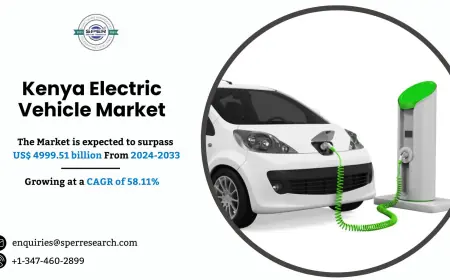MEP BIM Modeling: What Indian Developers Need to Know
MEP BIM Modeling: What Indian Developers Need to Know – Explore the benefits, challenges, and best practices of MEP BIM modeling for Indian developers. Learn how BIM is transforming construction efficiency, collaboration, and project delivery in India.
As India’s construction sector races toward a digital future, MEP BIM modeling has emerged as a game-changer for developers aiming to deliver world-class buildings on time and within budget. Mechanical, Electrical, and Plumbing (MEP) systems are the lifelines of any modern structure, and Building Information Modeling (BIM) brings unprecedented precision, collaboration, and efficiency to their design and execution. Here’s what Indian developers need to know about embracing MEP BIM modeling in 2025.
Understanding MEP BIM Modeling
MEP BIM modeling is the process of creating an intelligent 3D digital representation of all mechanical, electrical, and plumbing systems within a building. Unlike traditional 2D CAD drawings, BIM models are data-rich and parametric, meaning every object—be it a duct, pipe, or electrical conduit—contains physical dimensions, technical specifications, maintenance schedules, and even supplier details. This holistic approach enables seamless integration of MEP systems with architectural and structural elements, ensuring that every component fits and functions as intended.
Searching for precise and reliable mep drawings services in India for your next project? Contact us at Designheed.
Why BIM MEP is Transforming Indian Construction
India’s infrastructure landscape is evolving rapidly, with mega projects like metro rail corridors, airports, and smart cities increasingly relying on BIM for MEP design and coordination. BIM MEP is now considered essential, not optional, for future-ready construction in India. The technology is credited with reducing design errors, improving coordination, and enabling efficient project delivery. Government support and the rise of skilled BIM professionals are accelerating this shift, making it the backbone of infrastructure development.
Key Benefits for Developers
1. Early Clash Detection and Error Reduction
One of the biggest advantages of MEP BIM modeling is its ability to detect and resolve clashes between MEP systems and other building elements before construction even begins. This proactive approach prevents costly rework, delays, and site disruptions, leading to smoother project execution.
2. Enhanced Collaboration and Communication
BIM platforms enable centralized, cloud-based collaboration where architects, engineers, contractors, and facility managers work on the same up-to-date model. This reduces miscommunication, ensures everyone is aligned, and streamlines approvals and changes.
3. Improved Efficiency and Cost Savings
Automated processes in BIM—such as quantity take-offs, cost estimation, and scheduling—optimize material usage and labor allocation. This results in significant cost savings and faster project delivery.
4. Sustainable and Energy-Efficient Design
BIM MEP modeling supports energy simulations and performance analysis, helping developers design buildings that are not only compliant with green standards but also more cost-effective to operate in the long run.
5. Data-Driven Facility Management
The data-rich BIM model serves as a digital twin for the building, providing facility managers with accurate information for maintenance, upgrades, and lifecycle management.
Are you looking to convert point cloud data into intelligent 3D models with scan to BIM services? Get in touch with Designheed today.
Best Practices for Successful Implementation
Centralized Collaboration
Adopt a cloud-based BIM platform to enable real-time collaboration among all project stakeholders. This ensures that everyone works from the latest model, reducing errors and improving coordination.
Early and Regular Clash Detection
Use BIM’s clash detection tools early in the design phase to identify and resolve conflicts between MEP systems and other disciplines. Regular reviews prevent issues from escalating during construction.
Standardization of Design Models
Establish standardized templates and processes for MEP designs. This ensures consistency across projects and teams, simplifying handovers and future upgrades.
Integrated Project Delivery
Bring together architects, engineers, and contractors from the outset. Integrated teams can leverage BIM’s full potential, ensuring that MEP systems are coordinated with architectural and structural plans.
Challenges Facing Indian Developers
Despite its advantages, BIM adoption in India faces hurdles:
High Initial Investment
BIM implementation requires upfront investment in software, hardware, and training. For small and mid-sized developers, this can be a significant barrier, especially when short-term ROI is uncertain.
Talent Shortage
There is a shortage of trained BIM professionals in India. While software skills are growing among younger engineers, expertise in BIM standards, workflows, and coordination is still limited, slowing down effective adoption.
Resistance to Change
Many industry veterans remain comfortable with traditional 2D workflows, leading to resistance when transitioning to BIM-based processes. This can result in fragmented adoption and underutilization of BIM’s capabilities.
Lack of Standardization
India currently lacks a national BIM mandate or standardized protocols, leading to inconsistencies in levels of detail, data exchange, and modeling practices across projects and firms.
Data Management and Security
The vast amount of data generated by BIM models raises concerns about data ownership, cybersecurity, and intellectual property. Reluctance to share models freely can hamper collaboration and transparency.
Are you seeking expert BIM consulting services to streamline your construction workflow? Reach out to Designheed.
Real-World Impact: Indian Success Stories
Projects like Chennai Metro Phase II have demonstrated how BIM MEP modeling can reduce design issues, improve coordination, and enable smoother construction. The use of BIM in such large-scale infrastructure projects is setting new benchmarks for quality, efficiency, and sustainability in Indian construction.
Outsourcing and Expert Partnerships
Many Indian developers are turning to specialized MEP BIM modeling service providers to bridge skill gaps and optimize project costs. Outsourcing to experienced BIM firms not only brings in technical expertise but also ensures access to the latest tools and global best practices, making project delivery more seamless and efficient.
The Road Ahead: Embracing BIM for Competitive Advantage
As India’s construction industry becomes more complex and globally integrated, MEP BIM modeling will be crucial for staying competitive. Developers who invest in BIM today will benefit from reduced risks, faster project cycles, and buildings that are future-ready and easier to manage throughout their lifecycle.
Follow these links as well
https://www.designheed.com/revit-family-creation/
https://www.designheed.com/bim-implementation/
https://www.designheed.com/bim-for-infrastructure-and-civil/
https://www.designheed.com/good-for-construction-drawing/
https://www.designheed.com/bim-coordination/
https://www.designheed.com/bim-modeling/
https://www.designheed.com/bim-model-auditing/

What's Your Reaction?
 Like
0
Like
0
 Dislike
0
Dislike
0
 Love
0
Love
0
 Funny
0
Funny
0
 Angry
0
Angry
0
 Sad
0
Sad
0
 Wow
0
Wow
0

















































